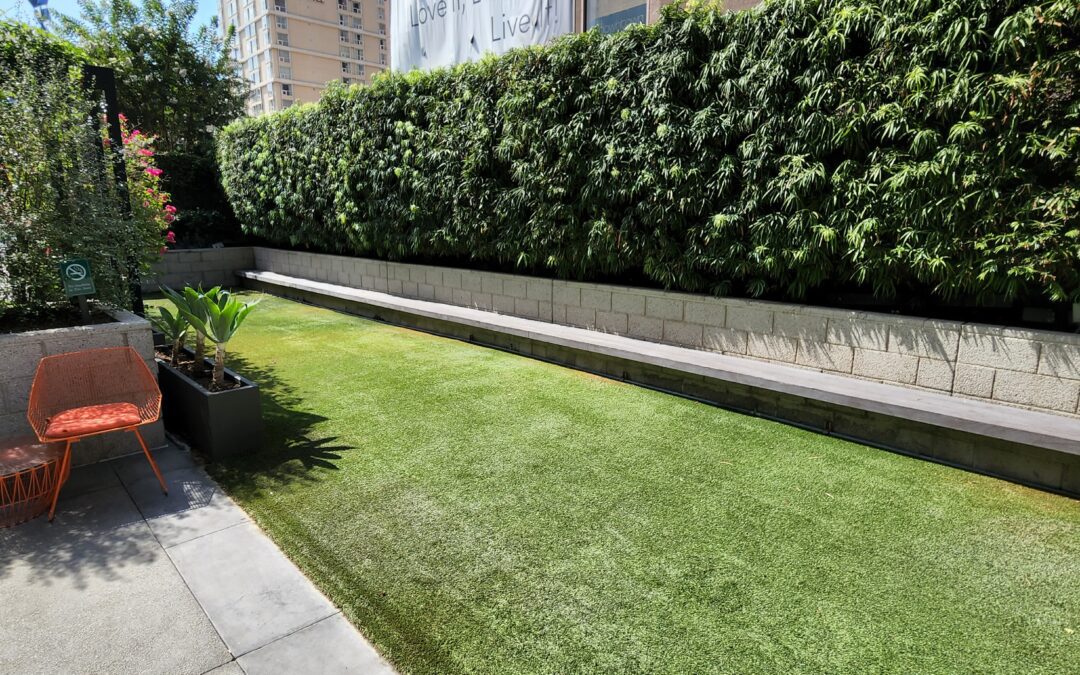Due to its low maintenance needs and evergreen appearance, artificial grass has grown in popularity among both businesses and residential properties. In contrast to natural grass, it doesn’t need to be cut, watered, or fertilized, making it a desirable alternative for people who want to save the time and money they spend maintaining their lawns. However, fake grass has a shelf life and will ultimately need to be replaced, just like any other outdoor surface. But when should artificial grass be replaced? We will examine a few crucial elements to take into account to determine if it’s time to replace artificial grass!
Wear and Tear: Artificial grass might eventually start to exhibit symptoms of wear and tear, even though it is made to resist high foot traffic and weather damaging the grass fibers. It could be time to think about replacement if you observe severe fraying, matting, or flattening of the grass fibers. Pathways and play areas get worn down more quickly than other parts of the lawn because of the high traffic they receive. Check your artificial grass frequently for any indications of degeneration or damage.
Problems with drainage: One of the benefits of artificial grass is its superior drainage system. Artificial turf usually has a perforated backing that makes it easy for water to pass through. On the other hand, if you start to notice water puddles or poor drainage on your artificial grass, it can be a sign that there is a problem with the drainage system or base underneath. In certain situations, it could be necessary to replace the artificial grass in order to restore adequate drainage and stop water damage to the nearby regions.
Fading or Discoloration: Artificial grass is created to last for many years while still having a brilliant color and appearance. However, over time the grass may fade or discolor due to prolonged exposure to sunshine, adverse weather, or the use of specific cleaning agents. The artificial grass may have outlived its usefulness if your once-bright, green lawn has become dull or has developed glaring spots of discoloration. It will ensure that you continue to enjoy an aesthetically pleasing outdoor environment while also enhancing the aesthetics by replacing the grass.
Odor and Mold Growth: It’s critical to take immediate action if you discover mold or mildew growing on your fake grass or detect offensive aromas coming from it. Pet pee that has collected, spills, or poor drainage can all cause odors. In places where moisture gets trapped or where there isn’t enough airflow, mold and mildew can grow. While cleaning and disinfecting might help with these concerns, more serious situations can need replacing the artificial grass in order to address the root of the problem and stop subsequent difficulties.
Aging and Outdated Design: Styles and designs evolve with time, just like any other home improvement element. It could be time to think about replacing your fake grass if it is beginning to seem dated or doesn’t match your current aesthetic tastes. Your outdoor space can get a new, contemporary look by upgrading to a newer artificial grass model, which also benefits from enhanced technologies and materials that offer higher performance and longevity.
Artificial grass does have a lifespan, even though it has many advantages and needs less upkeep than real grass. It’s crucial to keep an eye on the condition of your fake grass to know when it needs to be replaced. It may be time to replace your artificial grass due to factors like wear and tear, drainage problems, fading or discoloration, odor and mold growth, and obsolete design. Your artificial grass lifespan can be increased by doing regular inspections, performing the necessary maintenance, and responding quickly to problems. When the time does come for replacement, seek advice from an artificial turf specialist to make sure you pick the best kind of synthetic grass for your unique requirements and preferences. If you spend money on high-quality fake grass and get it installed correctly, you can have a lovely, low-maintenance yard for many years to come.

